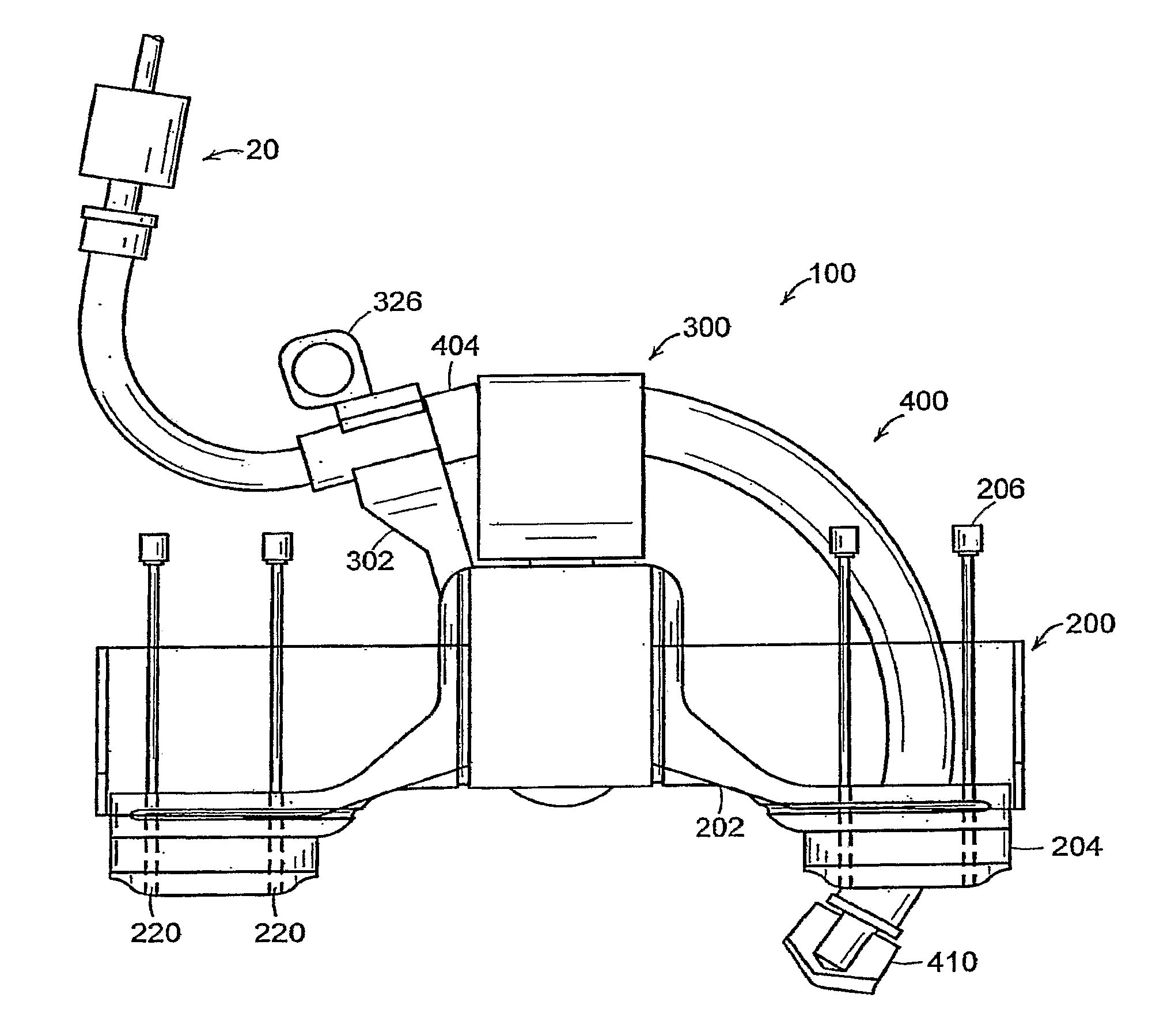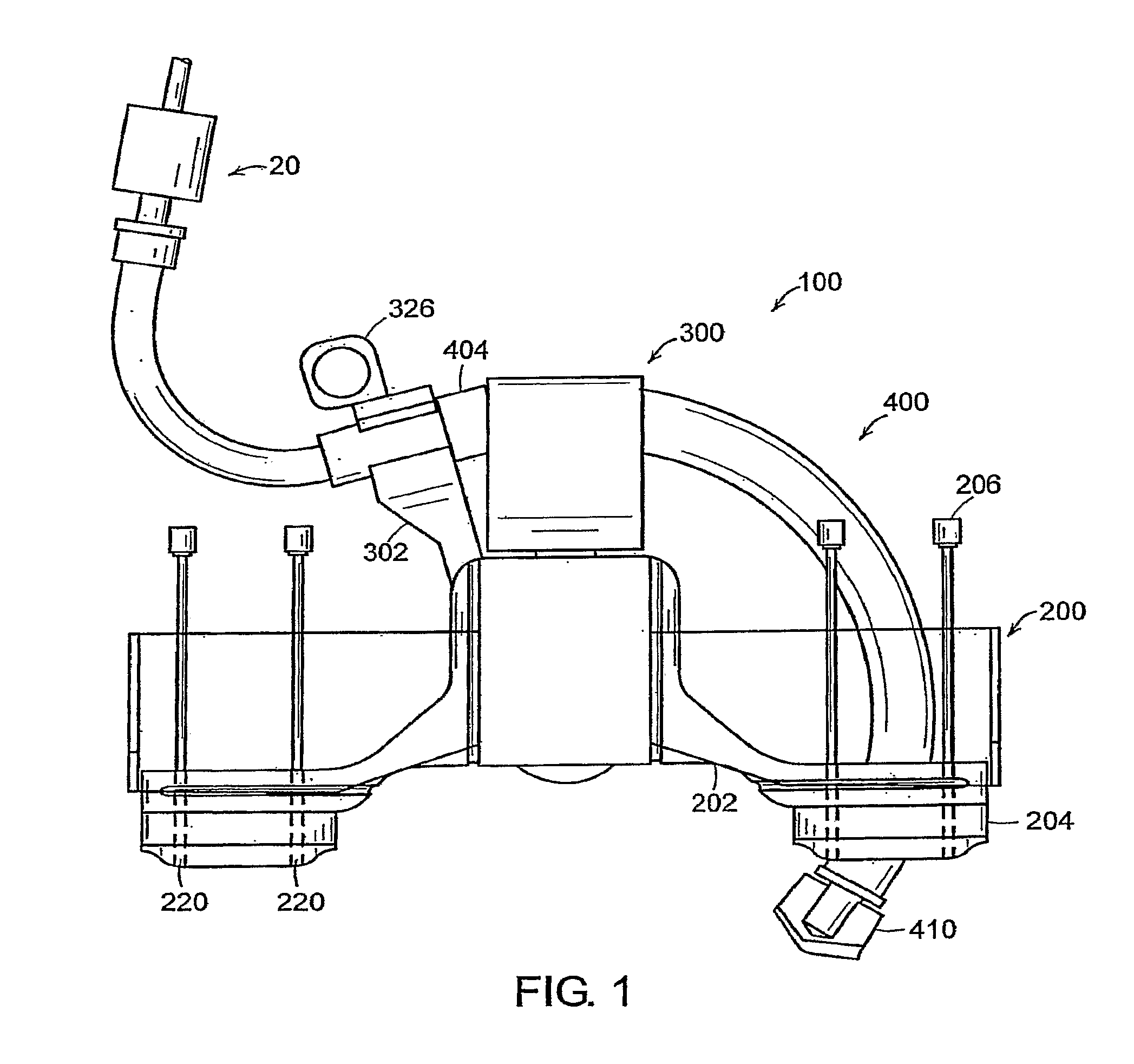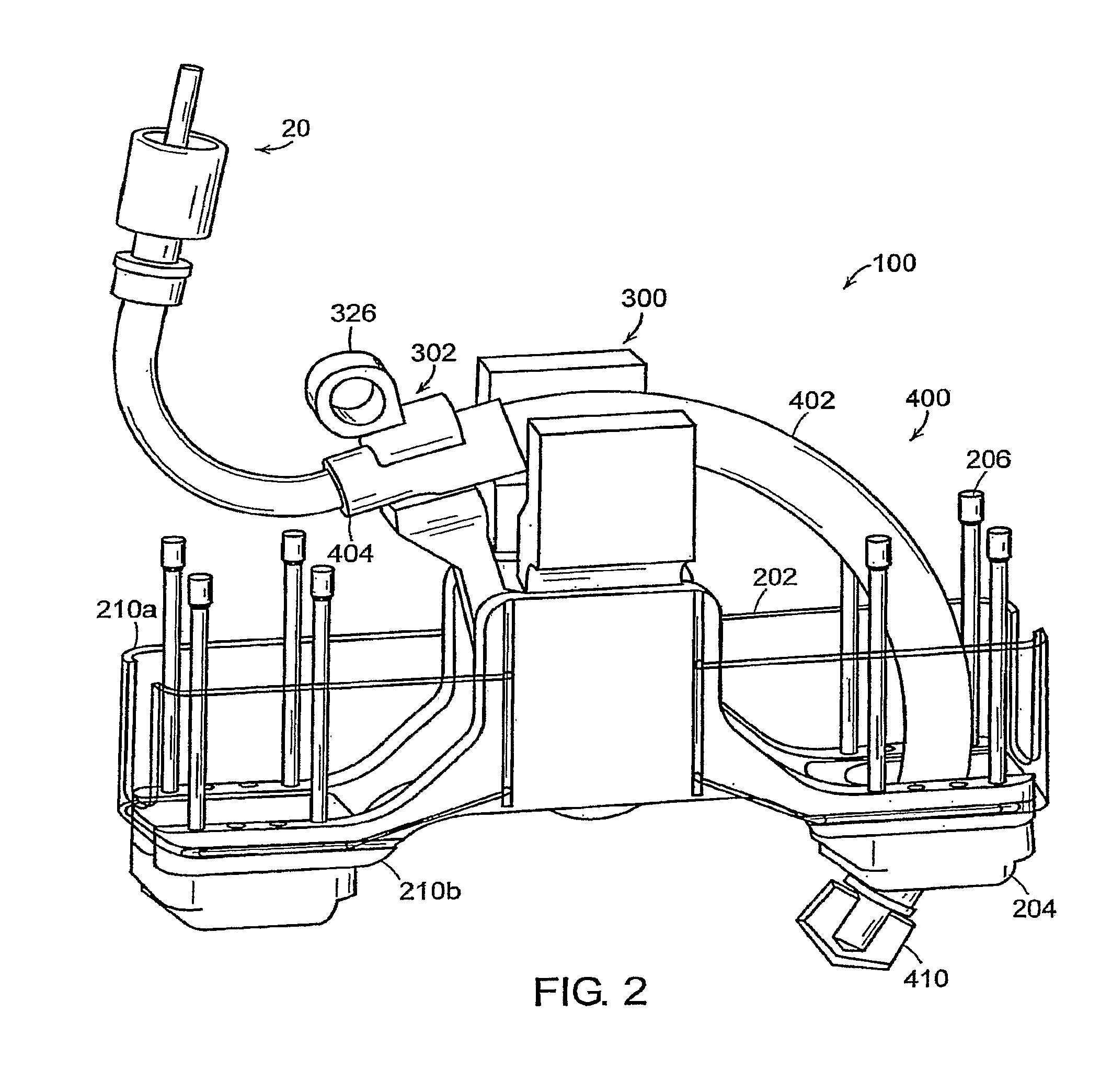Systems, devices and apparatuses for bony fixation and disk repair and replacement methods related thereto
a technology of system devices and apparatuses, applied in the field of methods, systems and apparatuses for bony fixation, can solve the problems of limiting the success of these procedures, difficult to achieve adequate stability and effective healing, and difficult to achieve the effect of adequate stability and healing
- Summary
- Abstract
- Description
- Claims
- Application Information
AI Technical Summary
Benefits of technology
Problems solved by technology
Method used
Image
Examples
Embodiment Construction
[0090]Referring now to the various figures of the drawing wherein like reference characters refer to like parts, there is shown in FIGS. 1-3 various views of a drilling apparatus 100 according to an aspect of the present invention that is generally comprised of a platform assembly 200, a pivot arm assembly 300 and drill assembly 400. As hereinafter described in more detail, the pivot arm assembly 300 is removably secured to the platform assembly 200 and the platform assembly is removably secured to the bone or bony structure so as to maintain the pivot point of the pivot arm assembly in general fixed relation to the bone or bony structure. The drill assembly 400 is removably secured to the pivot arm assembly 300 so as to maintain the end of the drill assembly including the bit 410 or drill end in fixed relation with respect to the pivot arm 302 of the pivot arm assembly. Consequently, as the pivot arm 302 is rotated about the pivot point, the bit 410 follows a predetermined arcuate,...
PUM
 Login to View More
Login to View More Abstract
Description
Claims
Application Information
 Login to View More
Login to View More - R&D
- Intellectual Property
- Life Sciences
- Materials
- Tech Scout
- Unparalleled Data Quality
- Higher Quality Content
- 60% Fewer Hallucinations
Browse by: Latest US Patents, China's latest patents, Technical Efficacy Thesaurus, Application Domain, Technology Topic, Popular Technical Reports.
© 2025 PatSnap. All rights reserved.Legal|Privacy policy|Modern Slavery Act Transparency Statement|Sitemap|About US| Contact US: help@patsnap.com



